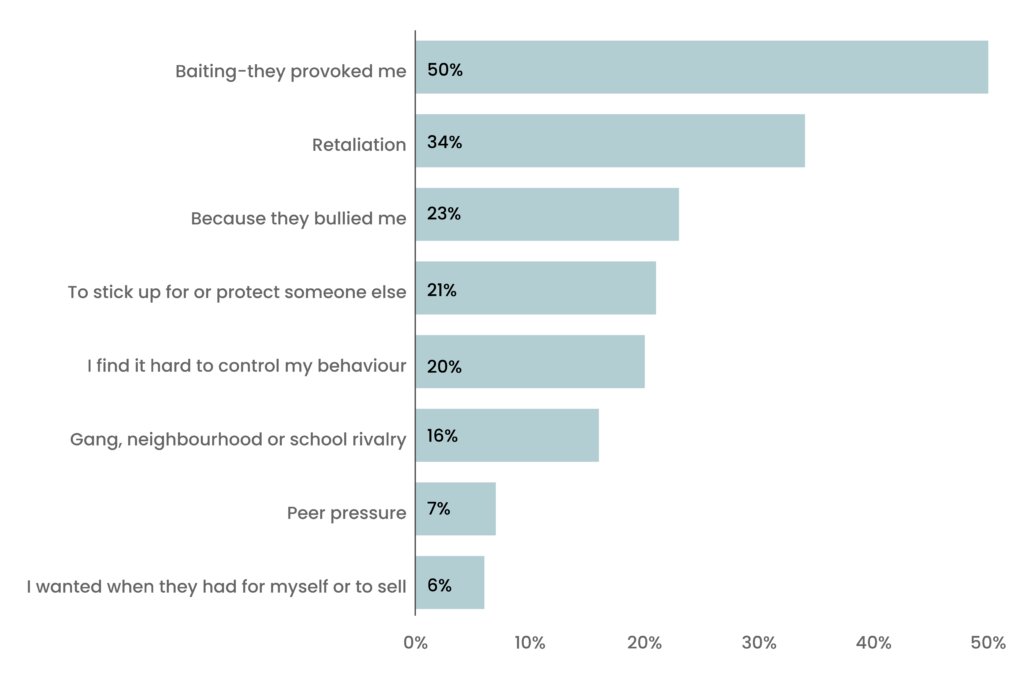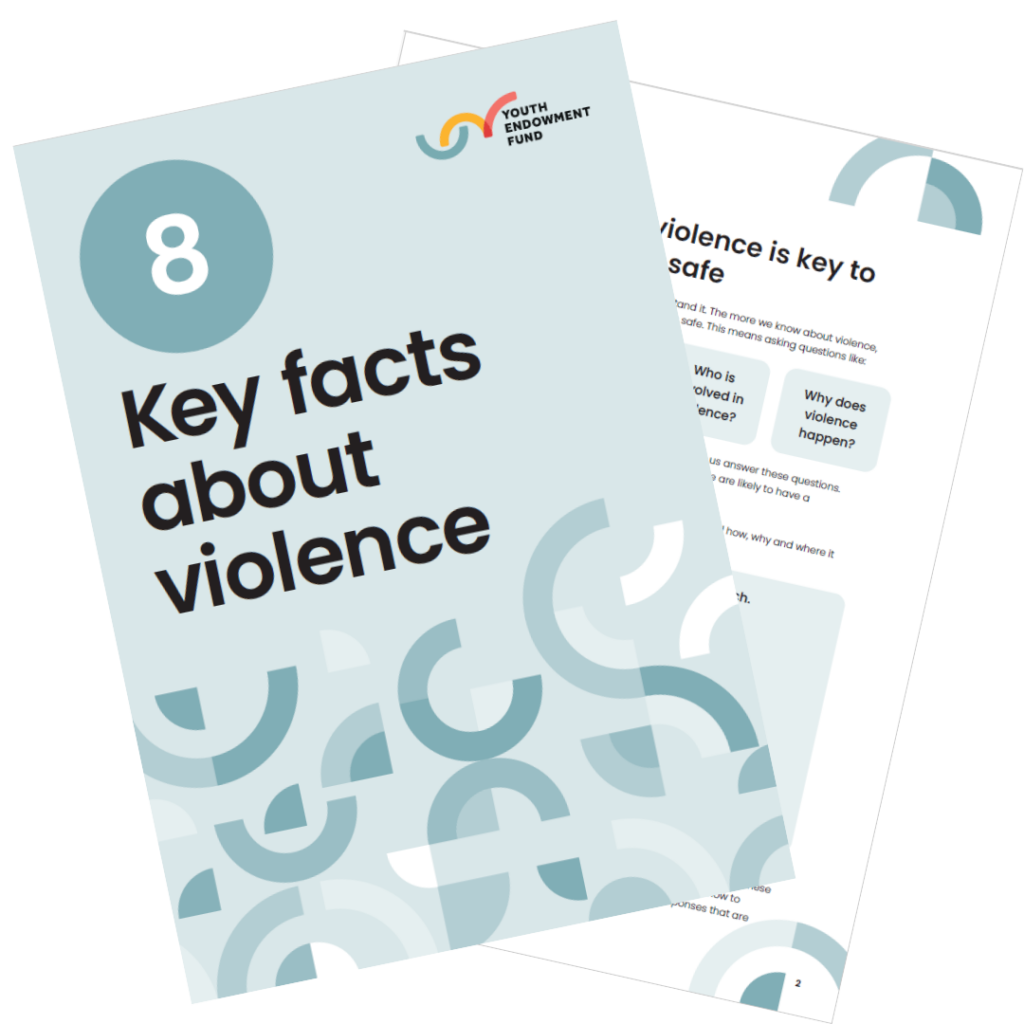
Key Facts About Violence

Key Facts About Violence
Research suggests that people involved in violence are more likely to be part of social networks that include other people involved in violence. If someone you know is involved in violence, you are at greater risk of also experiencing violence. The majority of research on this topic has been conducted on gun violence in the USA. However, recent research has found similar ‘network effects’ in the UK. A study in Merseyside found that knowing someone who had been convicted of violence was associated with a 16% increased chance of committing violence in the future.
Findings from YEF’s Children, Violence and Vulnerability 2023 survey into children and young people’s experiences of violence provides further evidence on the role of social relationships: children reported provocation and retaliation as the most important explanations for why they commit violence (see figure below). We also found that it’s common for children who are victims of violence to know the person who committed violence against them.

It’s important to understand the nature of violence in your area and the role of social relationships and group conflict in driving it. If they play an important role, how will you design your response to address them?
This fact has informed the design of several promising violence prevention interventions. A&E navigator programmes aim to interrupt violent retaliation by working with people who’ve experienced a violent injury and attend A&E. Providing support in the aftermath of an incident could protect vulnerable children from this vicious cycle.

When you look at a co-offending group what you tend to see is a hierarchical structure because every single person has been brought in by somebody else, and this is especially true for females. The language used within these groups reinforces the idea of the shared experience and family-like bonds.
You’ll hear phrases like ‘My brother,’ ‘You’re my fam,’ and ‘We’re in this together.’ Which in turn links to the ideas of shared experiences, often of trauma. Over time, this creates a strong emotional investment that’s difficult to break away from.
“This presents several challenges when helping individuals exit these groups. There’s the fear of retaliation, especially if they’ve incurred debts or created victims. Then there’s the question of income—what happens if the group or illicit activity was their primary source of money? Being part of a group can also destroy family networks.
“There are two sides to the support we offer – ‘soft support’ and ‘hard support’. Soft support is about emotional empathy. It’s about helping them see the value in the things around them now and understand the consequences if they don’t take care of those things.
“Then there’s the hard support, which includes risk assessments, safety planning, mental health support, and sometimes legal assistance. One thing we do well is involve people with lived experience of the criminal justice system. We aim to surround individuals with success stories so they can see that people have made it out the other side and are doing well.”
Get your copy of our latest research resource on the key facts about violence.

